Heritage Tavira
Tavira presents unique not only by nature but also exhibits the historical, cultural and religious heritage. Between spaces dedicated to the Christian religion and Islamic religion, Tavira becomes timeless and a center of contrasts.
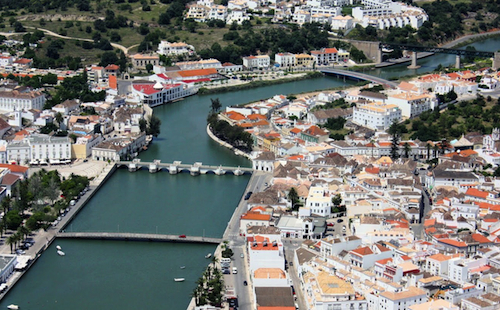
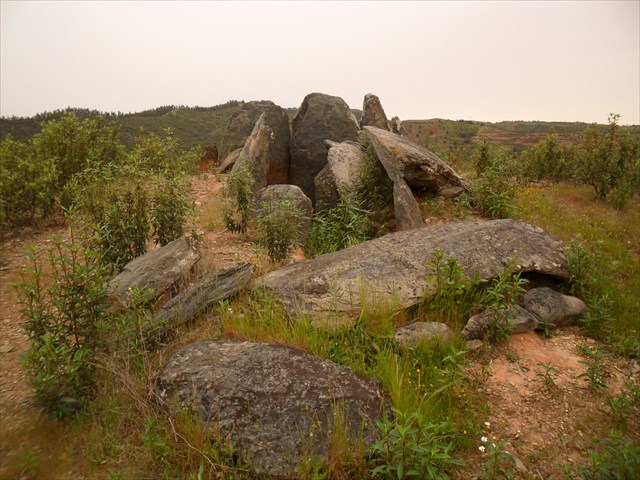
Dolmen of Masmorra – in Alcarias Pedro Guerreiro, in Cachopo, this funerary megalithic monument with thirteen pillars vertically, was built between the fourth and third millennium BC, the camera features a circular plan and a clear day it is possible to see the lands of Beja.
Dolmen of Pedras Altas – in Mealha in Cachopo, this megalithic funerary monument with twelve pillars vertically, was eruido in IV and III millennium BC, contains a pear-shaped plant, and its entrance faces east.
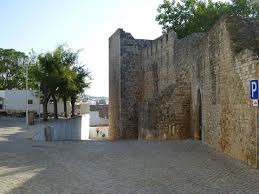
Wall Phoenician – a defensive wall with 13 meters long, this Phoenician wall will be a Phoenician museum center of the Municipal Museum of Tavira. Archaeological excavations showed that wall with two construction phases, the first of the late seventh century and the second in a thinner thickness has two non-parallel face of native limestone. These structures are observed in the Calçada D. Paio Peres Correia.
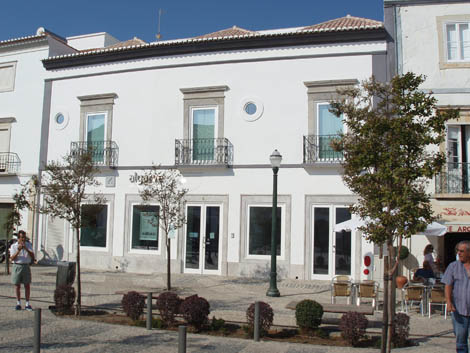
Islamic Museum Centre – It presents the Islamic booty collected through a set of findings from several archaeological excavations, which stresses the discovery of Tavira Vase. This takes advantage of the framework of the old section of the medieval wall in mud. It is open during the winter from Tuesday to Saturday from 09h30 to 12h30 and from 14h00 to 17h30; and summer: Tuesday to Saturday from 09h30 to 12h30 and from 15h00 to 18h30. Closing on Sunday and Monday.
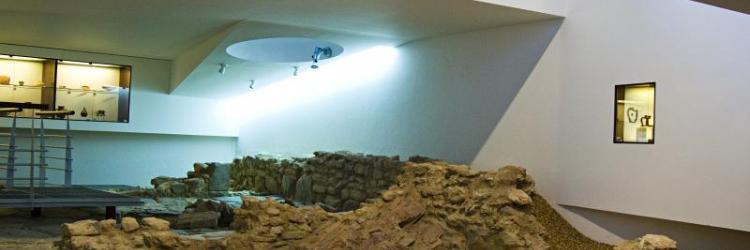
Archaeological Centre of the Almohad Neighborhood – Current Pousada do Convent of Our Lady of Grace, which due to their adaptation works, exposed remains of an Islamic quarter of the thirteenth century, consists of thirteen houses to the west of the fence convent. Much of this neighborhood has been preserved and museulizado, is an example of Islamic urbanism Almohad era in Portuguese soil. This neighborhood reveals sections of houses and streets as public piping systems along this estate are also presented more objects found during excavations. Open from 11h00 to 19h00.
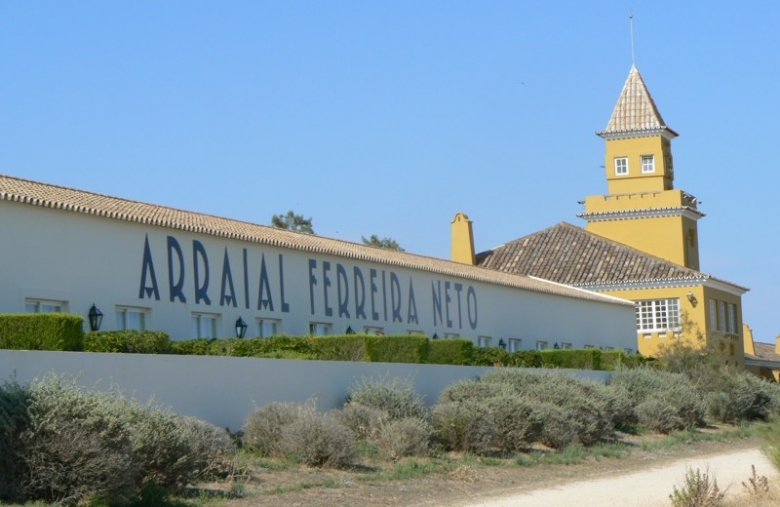
Village Ferreira Neto – This Public Interest Monument is near the mouth of Gilão River in the Peels Beach, in the area known as Four Waters, the confluence of the river Gilão, the Canal de Cabanas, Canal de Tavira and the sea access bar through island of Tavira, near the Fortress Mouse. This group of buildings that is a testament to the important economic activities of the Ria Formosa, one of the few architectural vestiges of support facilities to tuna fishing in the Algarve coast. The current set replaces the facilities that were demolished by the sea in 1943. The Arraial Ferreira Neto was like a social fishing neighborhood inhabited about 400 to 500 people, as it offered adequate facilities for industrial activities and enough comfort for rest of fishermen and their families. So this space was made up of school building, bathhouse, oven, chapel, medical center, public toilets and club, and a complete network of sewers and five tanks, along with a jetty at the mouth of the river Gilão. With the decline in tuna catch the latest campaigns here occurred between 1970 and 1971, making the Village ceases to fulfill its function. Currently it has been converted to a hotel unit.
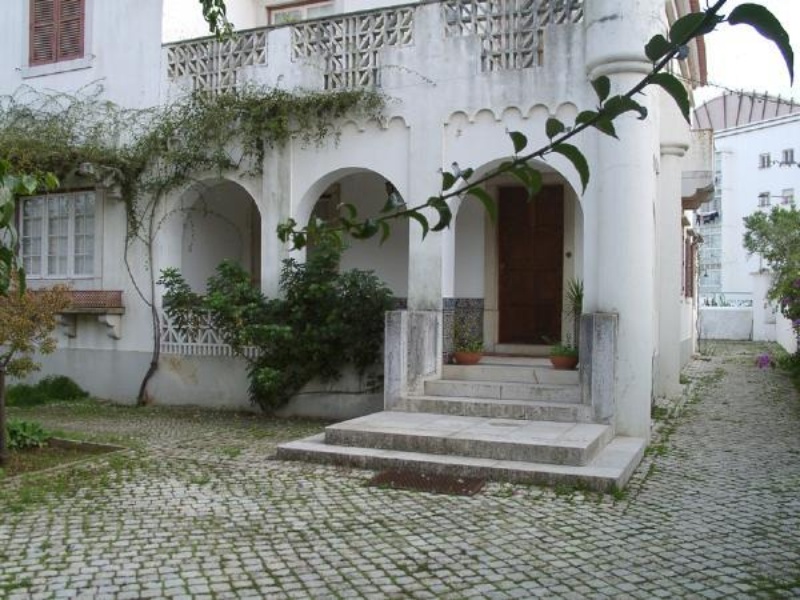
Houses Raul Lino – twin buildings at Av. Dr. Matthew Teixeira de Azevedo form a memory of urban expansion that occurred during the twentieth century, being considered as Municipal Interest Monument. They are a rare expression in Tavira, architect Raul Lino creativity and its traditional conceptions with the modernization of Portuguese house, which led to a national chain with architectural relief, especially during the first half of the twentieth century. And this creativity emerged the Casa Raul Lino in this space related to the taste of the owners with the construction procedures and the site and climate decoration.
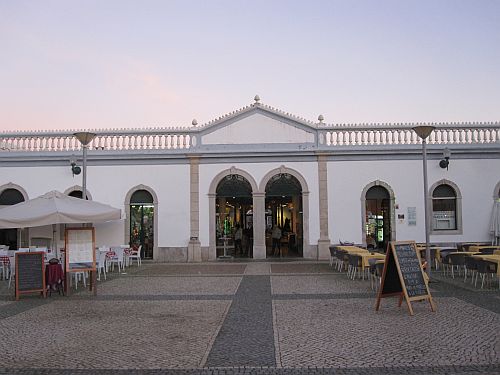
Ribeira Marketplace – It opened in 1887 and was aimed at the memory of a common market which was used until the mid-twentieth century. This was intended to ensure greater control of business activities and improve working and hygiene conditions, between the years 1887 and 1999. This space was as a shared nineteenth-century concern with urban development and growing industrialization. After the cessation of its function, this got rehabilitation and restoration in 2000, to the resumption of commercial and cultural functions in a more modernized form.
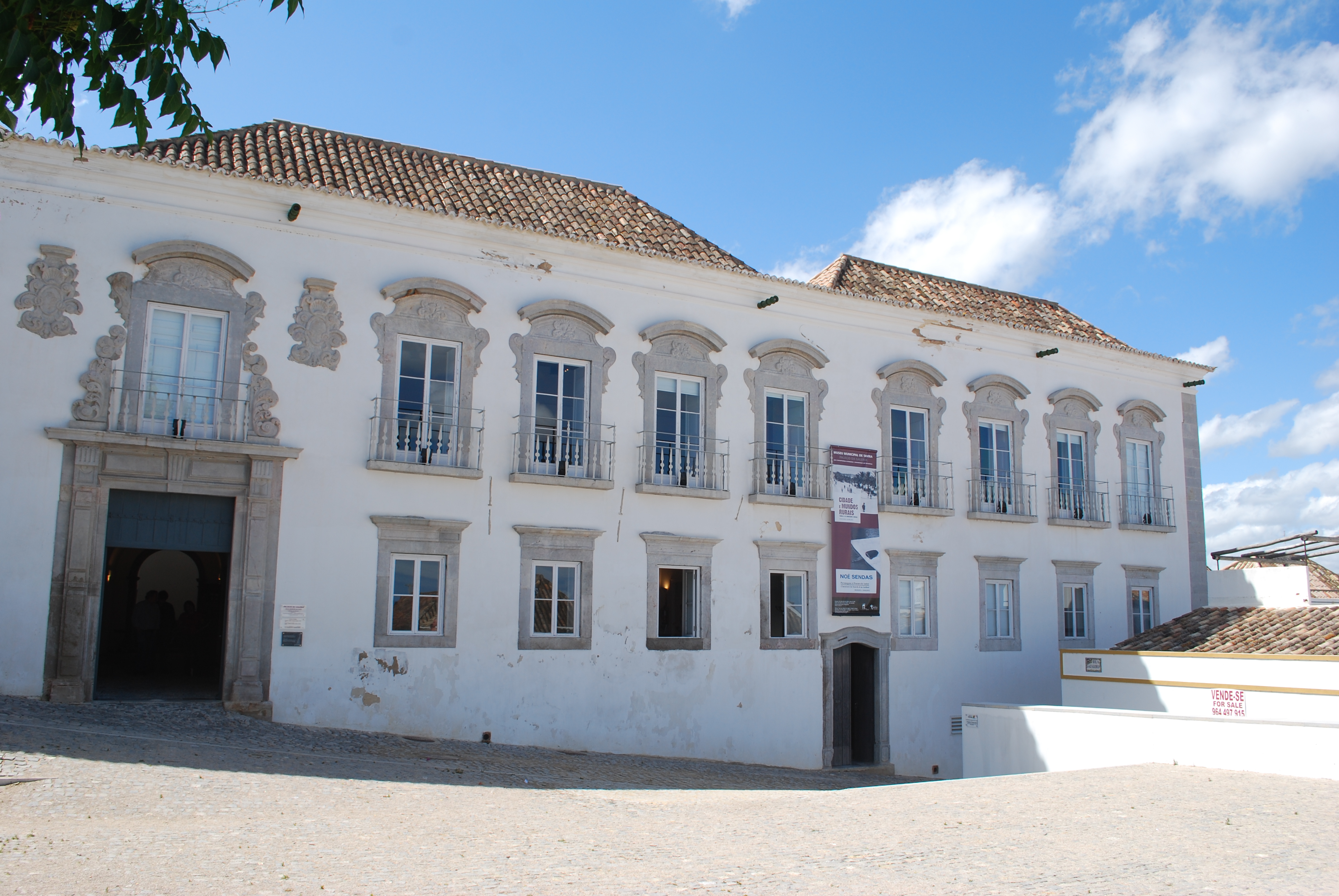
Palace Galeria – It is on the Walk Gallery and is a Public Interest Monument. This noble building dates back to the beginning of the Middle Ages however, its noblest features were implemented in the mid-sixteenth century, including a separate gallery or Renaissance loggia was built, going to designate the building, remaining until today, despite the obvious signs stone replacement. In Tavira, during the defense of the squares of Africa was inhabited by a bourgeoisie that promoted the richness of this region, in particular, members of this class have obtained the palace until 1737, that due to excessive charges, was later sold and met new owners from brotherhood that managed the Hospital of the Holy Spirit, through Brigadier Francisco da Silva Pacheco, Minister of Faro Carmelite Order and nephew of Bishop António Pereira da Silva; to the Judge John Leal da Gama Ataíde. The latter offered refurbishment works that gave the building its current forms, made by architect Diogo Tavares de Ataíde, important architect and master-builder Algarve of the eighteenth century. In the nineteenth and twentieth centuries, this palace ceased to exercise the residence function, passing ownership of Tavira House, running from Court Technical School. In 2001, up to today, it is the core of the Municipal Museum of Tavira, which hosts exhibitions about the history and diversity of the heritage of this region, capturing new artistic expressions of contemporaneity. It is open in winter time Tuesday to Saturday from 09h30 to 12h30 and from 14h00 to 17h30 and in the summer from Tuesday to Saturday from 09h30 to 12h30 and from 15h00 to 18h30. Closed Sunday and Monday.
Wells Phoenicians rituals of the Palace Galeria – in the lobby of the palace were carried out excavations that allowed the identification of several wells dug in the rock, being interpreted as “Wells Rituals Phoenicians”, coming from the centuries VII and IV BC, dedicated to the worship of Baal, the god of storms feniciano.
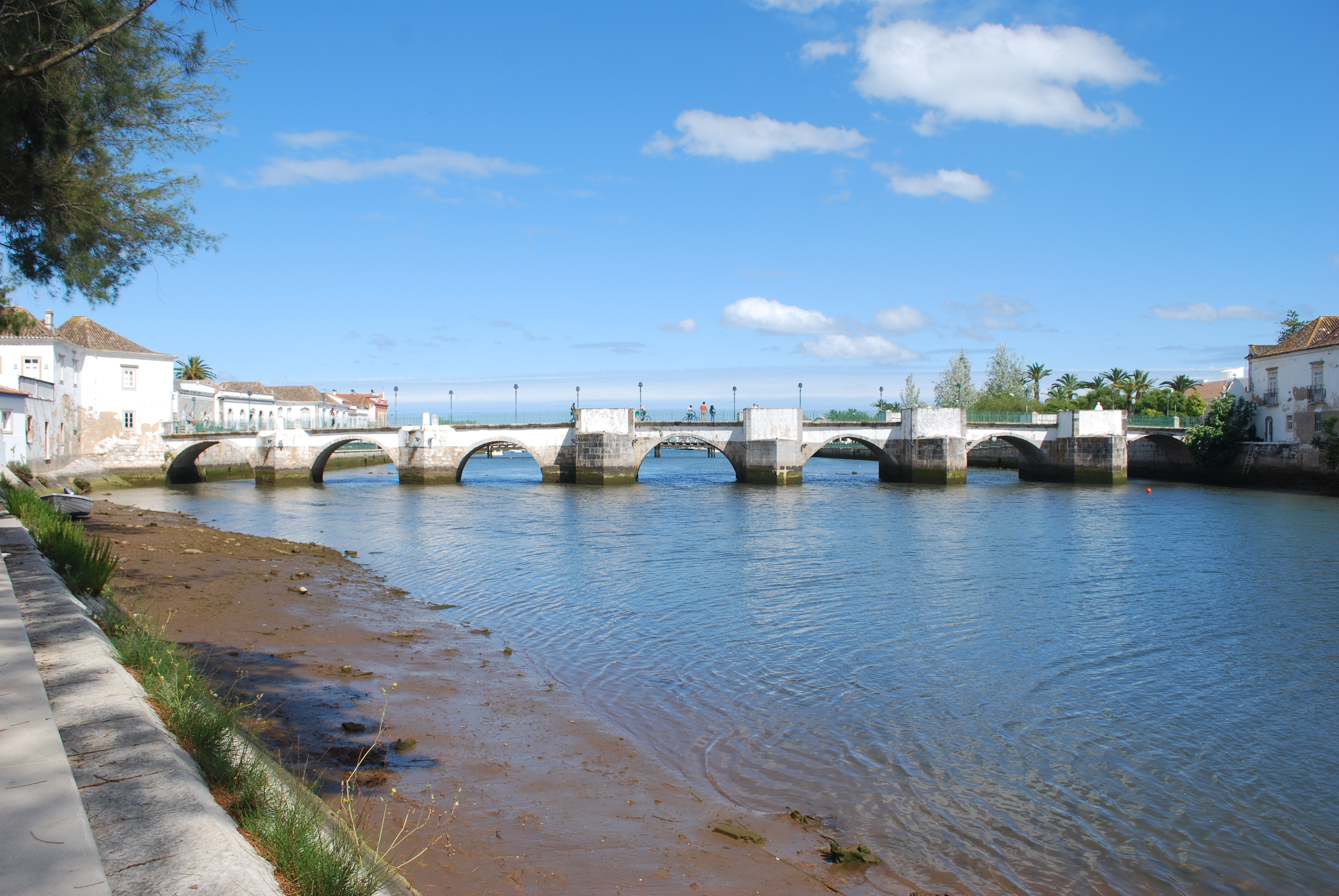
Old bridge over the river Gilão – It is a Public Interest Monument, there is a belief that this bridge was built during the Roman era. Initially, the bridge is fortified found at the entrance south joint Sea Tower, adjoining the city walls have been torn down due to an arcade in 1883. By the seventeenth century, the bridge connecting the two banks had a plan cruciform due to the existence of a central breakwater, having been inhabited. In 1655, the collapse of the old structure was rebuilt and was conferred this aspect. These works were necessary for operational and strategic value during the Restoration War, between 1640 and 1668. As a result of this war, the officials gathered and the people of the city for the reconstruction of the bridge, being completed in 1657. More recently, due to the great flood of December 1989, this bridge was damaged, and required its restoration until the end of 1992.
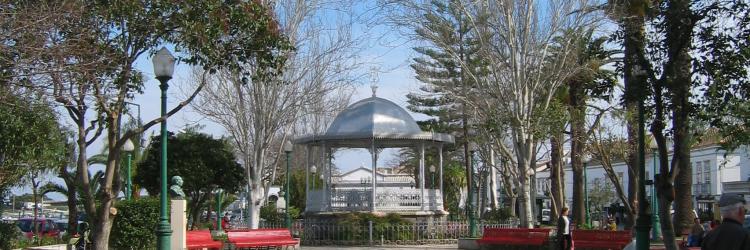
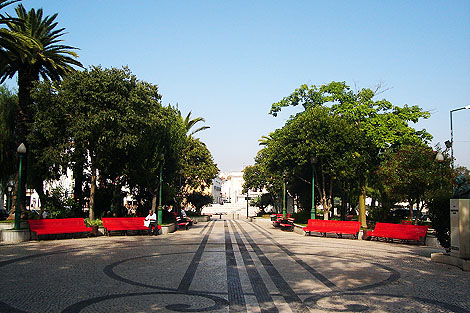
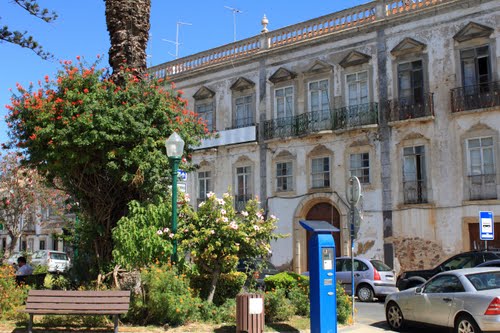
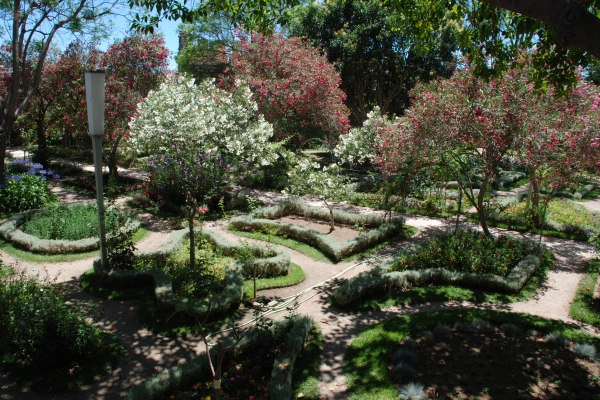
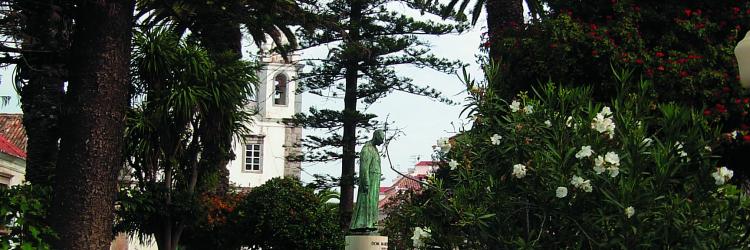
Historic gardens –the gardens of Tavira are salient evidence of the close relations between the historic city and nature. still bear witness to a culture, a few times and the originality of its creators. Its integrated works of art evoke memorable facts or figures, closely linked to the history of the city. Its defined landscapes are already inseparable complements of their respective urban settings.
Garden Bandstand – It is the oldest public garden Tavira. Work began in 1890, culminating a series of changes, with the construction of the Municipal Market (1887) and the walls of the river. Bandstand was manufactured in the city of Porto, the Gold Foundation firm coming to Tavira, by sea in 1890. In Octagonal and flexible lines centralized plant, is located in the heart of the garden, and witness the so-called architecture of the nineteenth century iron.
Garden of Alagoa – It is located in the old Plaza de Alagoa. The garden forms a large triangle obtuse harmoniously framed by the square. It is planted a heterogeneous set of trees, flowers and shrubs, which are represented species from the five continents.
Castle Garden – The land was acquired in 1938 by the Municipality of Tavira, then chaired by Isidoro Pires, designed for the construction of a gazebo, in order to enjoy the panoramic natural that opens over the city and upgrade the interior of the fortress.
São Francisco Garden – Became public garden in the late fifties of the last century. In it, alongside the various species of plants, reside other interesting sites that give it a very particular nature, such as the scenic presence of the Gothic remains of two of the former Franciscan cloister chapels and a historical collection of epigraphy and sculpture in stone, composed by coats of arms of the kingdom and important local families scattered throughout the grounds.
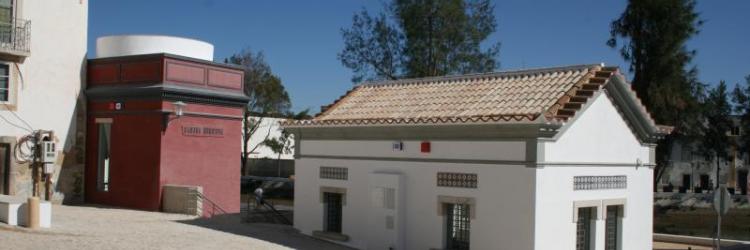
Interpretation Centre of Water Supply Tavira – Rehabilitation takes place in 2009 of the buildings of the old pumping station of water, with the objective to highlight the historical importance of the site to supply water to the city, its relation to the supply of other areas of the metropolis, as well as interpret the Source system Square, made by said lift station and deposit the Alto de Santa Maria. Opening hours – Winter: Tuesday to Saturday from 09h30 to 12h30 and from 14h00 to 17h30. Summer: Tuesday to Saturday from 09h30 to 12h30 and from 15h00 to 18h30. Closed: Sunday and Monday.
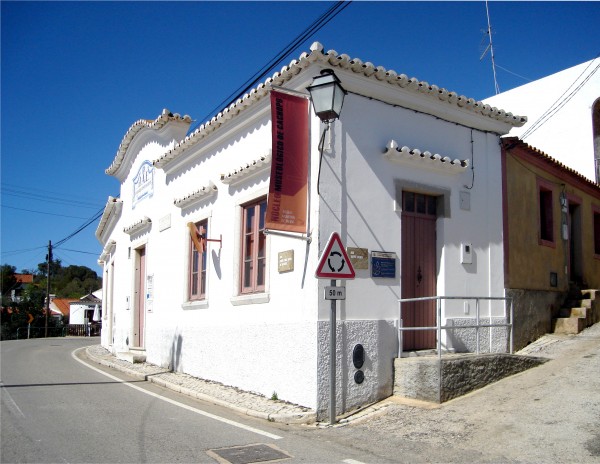
Museum Centre of Cachopo – Discusses the mountain slope of the municipal territory since prehistoric times. Serrano way of life there has been a universe of traditional knowledge of blacksmiths, saddlers, weavers and others, mainly linked to agricultural cycles, stories and individual pathways that lead the visitor through the transformation of a rural area of great landscape and social value. Its operation is ensured under a management agreement with the Parish Center of Cachopo. Opening hours – Monday to Friday, from 9:30 am to 13h00 and from 14h30 to 18h00.
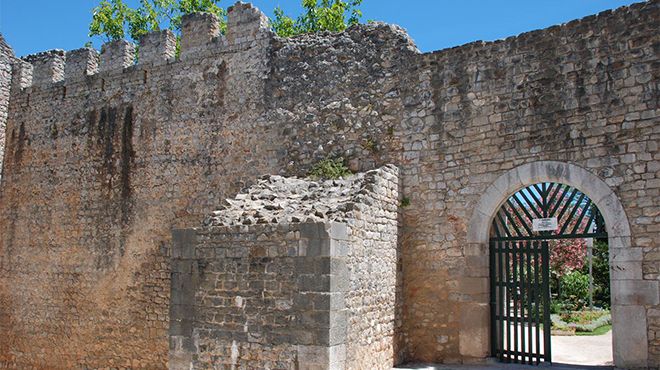
Castle and Walls of Tavira – this National Monument comes to building a Phoenician between centuries VIII and VII a. C. they spent about fourteen centuries without any major urban area if it had formed the Gilão margins. Among the late tenth and early eleventh century, Muslims retake the town of Tavira and the port and commercial vocation of the place, getting the top of the hill of Santa Maria the construction of the castle, to protect the ford of the Gilão. Throughout the eleventh century the town was becoming more important and was growing toward the river. In the shadow of the walls fixed a population that naturally increases and it begins to also add the Muslims chased north by the Christian kingdoms and seeking refuge in the most sleepy areas of southern Iberia. A first Almoravid wall, built with high probability, in the late eleventh century, or already in the twelfth century, followed by the Almohad reform period dating from its main elements. Later conquered by the Christian troops, new works gave a slightly oval shape, punctuated by some towers, which is still possible to reconstruct. The Tavira Castle stands strong and imposing in medieval times, which reached the contemporary in a state of ruin and no attractive infrastructure, having lost its defensive utility, this space serves as a burial ground throughout the first half of the nineteenth century, knowing most excitement when a serious cholera epidemic invests over the city in 1832. in 1938 the Council of Tavira acquires the castle grounds, projecting to a belvedere there, enjoying the panoramic natural that opened over the city and re-qualify the interior of the fortress , landscaping it. Born of the initiative dressy Castle Garden. In the local authority’s strategy allied with the State in 1939, that the shadow of the celebrations of the double centenary of the foundation and independence of Portugal declares the castle of Tavira as a National Monument, getting this restoration work in charge of the General Directorate of Buildings and Monuments national.
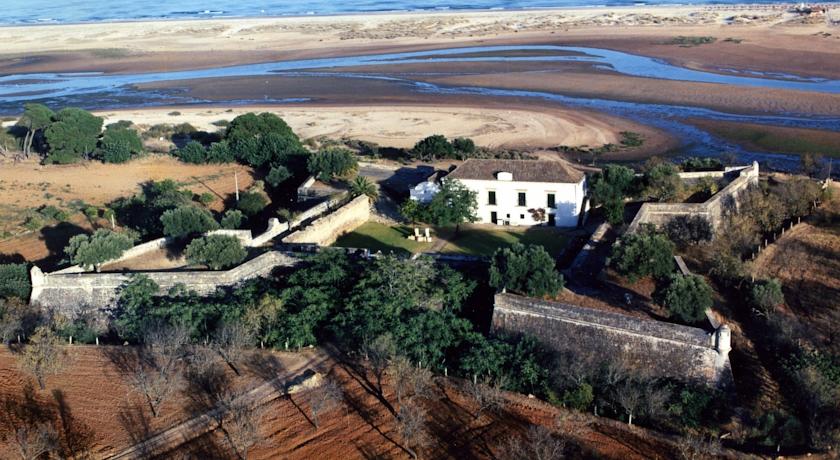
São João da Barra Fort – a Public Interest Monument, this strong rise was sent in 1670 by the General Captain of the Kingdom, the Earl of Kings Valley, in order to strengthen the protection of the Ria Formosa bar and access to the port of Tavira. Its history is documented in an inscription above the entrance door, which indicates to have been the Count who boosted the reconstruction of Tavira bridge in the seventeenth century. With the silting of the river and the deviation from the bar to the east, the Conceição fortress lost its military functions, and its space was adapted recently the Tourism of Nature, aiming at a recovery plan and remodeling.
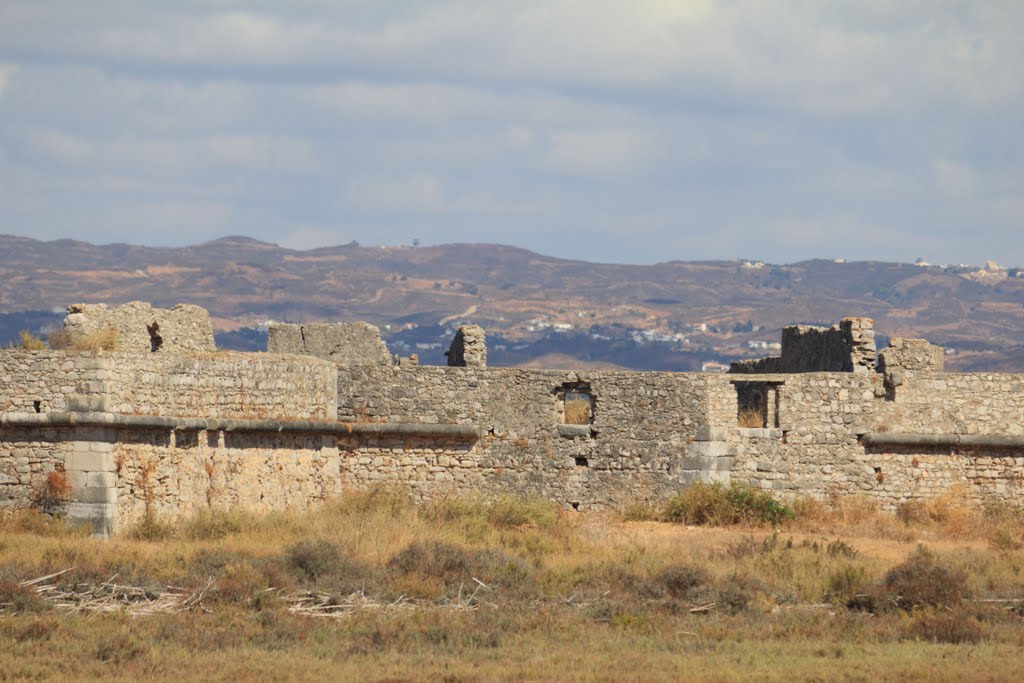
Rato ou Santo António Fort – This Public Interest Monument was sent rise root in the reign of King Sebastian to protect the entrance to the bar and, at the same time, the city of Tavira. No very useful because during its construction, there were changes in the coastline and, consequently, at the entrance of the bar, which moves progressively for Levante, taking defensive efficiency to that infrastructure. However, and according to opinion of the engineer Pedro Santa Colomba, this fortification would not be enough to protect the city from possible invasion and is therefore reinforced the castle of the city. In 1656, with a further amendment to the bar, it was built the fort of São João de Cabanas, and the fort of Santo António reduced to registration along with a small battery on the opposite bank of the Gilão. In a 1792 arms relationship, report the strong state, garrisoned by only nine men and two pieces. In 1821, the structure is without artillery and almost undone door, and the powder accumulates in a barn with no roof and rotten lining, being abandoned, the fort was voted. In 1830 it is disabled as a powder magazine and definitely abandoned by order of Brigadier Governor of the Algarve Armas, Molellos Viscount, who considers too costly to maintain or connect to the ground.
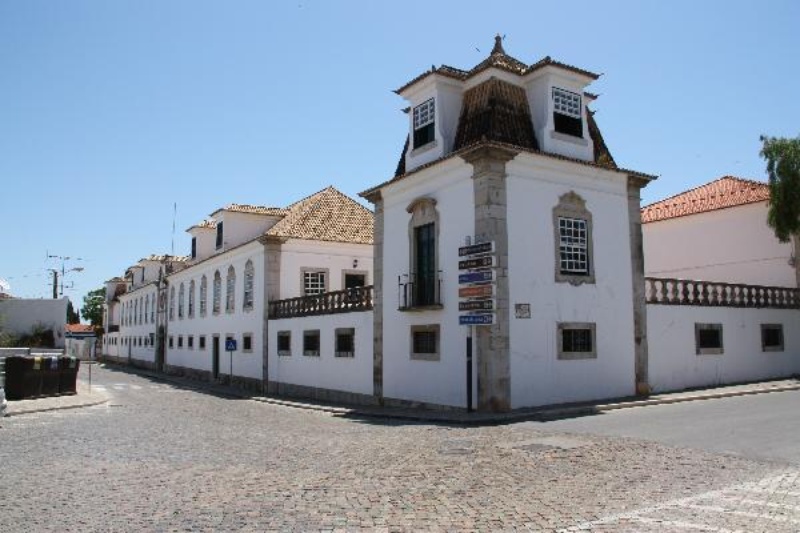
Headquarters Atalaia – This Public Interest Monument began to be built in 1795, with the transfer of Faro Infantry Regiment to this city, increases the number of military personnel in Tavira. Its construction was interrupted and resumed in 1856, after the effects of the political situation and with the French invasion that crippled the national economy, and other events that led to the implementation of Liberalism and Civil War that forced the military to retreat in private homes, until in 1835, with the extinction of the religious orders, the convent of Our Lady of Grace was given to military power, while the headquarters of the Watchtower was in construction, being completed in the early years of the twentieth century. In the course of the twentieth century, the building underwent some change in 1950 is built a new cafeteria in 1954 is paved courtyard of the parade in 1970 and one second floor is added to the side wings to serve new barracks.
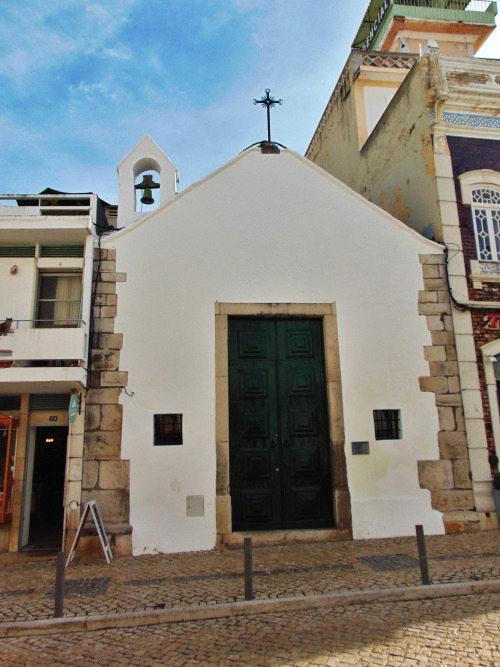
Nossa Senhora da Consolação Chapel – a Public Interest Monument, this dates back to 1648, year of creation of the Confraternity of Our Lady of Consolation of Prisoners. The chapel retains its religious function, integrating a significant number of hermitages of the city founded and managed Tavira, mostly by confraternities or brotherhoods, in this case, the Confraternity of Our Lady of Consolation of Inmates who moved for a specific purpose : give moral and spiritual support to prisoners of old chain Tavira. According to tradition, it was the chapel where the convicts spent their last hours.
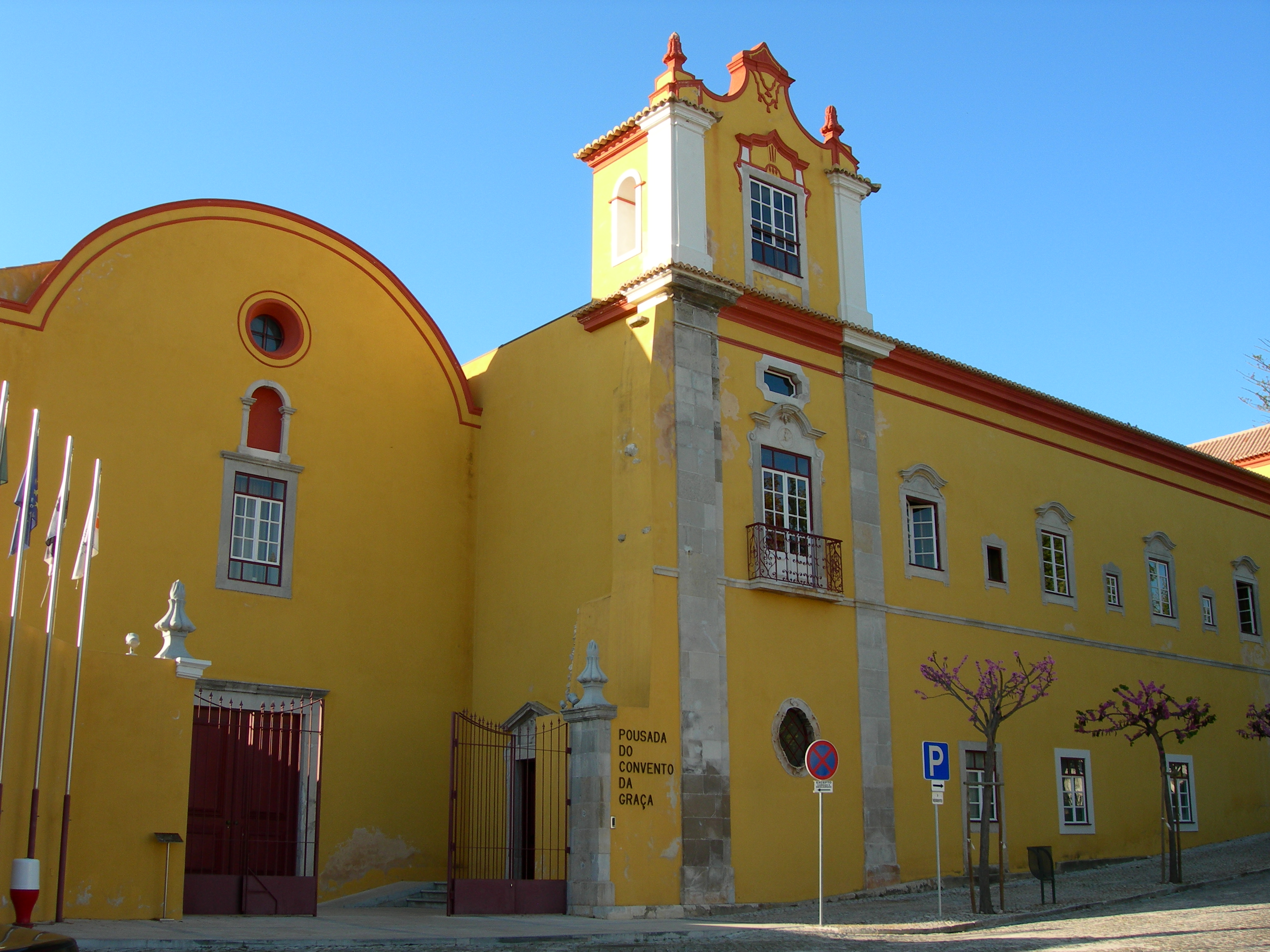
Convent of Nossa Senhora da Graça – a Public Interest Monument, which is one of the most important buildings of the historic center of the city, both for its implementation in genetic hill, as the visual impact on the landscape, standing out well above the wall. This occupies a relatively peripheral area of the primitive walled enclosure, in which up to the fifteenth century was located the Jewish quarter, precisely the opposite area to the Alcazaba and the main gate of the city. With the expulsion of the Jews, the Jewish quarter was abandoned, and Friar Pedro de Vila Viçosa here founded the convent in 1542. Over the years obtained works in its structure. And in 1839, with the extinguishment of the religious orders, the convent was in charge of the Ministry of War, which here installed successive military units. In 2003, the group was acquired by the Municipality of Tavira, and then transferred to ENATUR, which installed an Inn. This work enabled the archaeological intervention in space, a process that has allowed the identification of an Islamic neighborhood material thirteenth century.
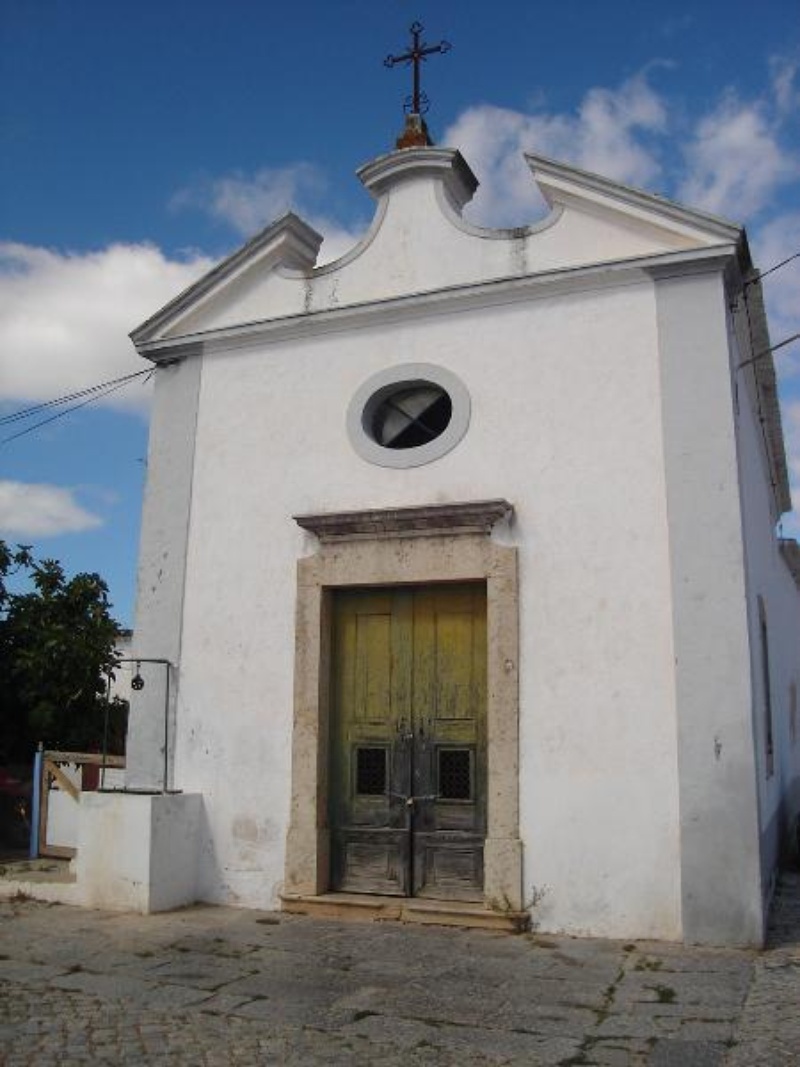
Nossa Senhora das Angústias Chapel – a Municipal Interest Monument dating from the first half of the seventeenth century. On 15 September, the patron saint of the day, here focused devotees from various parts of the Algarve and even in Andalusia, making it a great religious and camps party that lasted three nights. The facade was rebuilt in the late nineteenth century, acquired its current appearance.
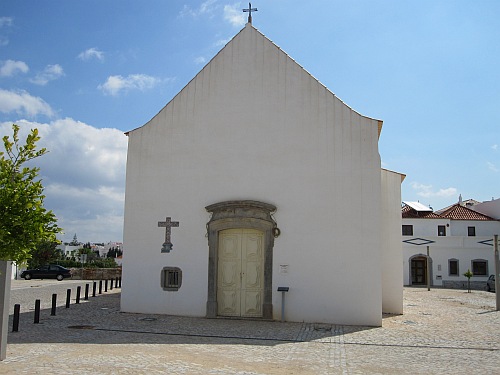
Santa Ana Chapel – a Municipal Interest Monument is temporarily closed to the public. This dates back to the Middle Ages, one of the oldest temples of Tavira, its patronage belonged to the Order of Santiago. During the first half of the eighteenth century, it received works and was later adapted to the chapel of the Palace of the Governor and Captain-General of the Algarve, after his transfer to Tavira, from 1756, following the earthquake. Temple of a single nave and chancel, sacristy attached with division and close access to the pulpit. This temple was recovered and musealized in 2006, integrating the polinucleado system Municipal Museum of Tavira.
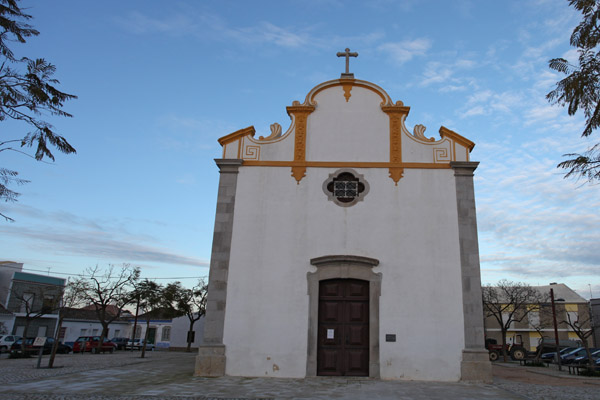
São Sebastião Chapel – this Municipal Interest Monument is temporarily closed to the public. This temple of medieval origin, is dedicated to the worship of the Roman martyr saint had as a lawyer against epidemics and contagions. In 1745, it was rebuilt under the direction of master Diogo Tavares de Ataíde, Aleixo Manuel and Jacinto Pacheco. To complete this work, the exuberant work of painting the interior was executed by Diogo Mangino, a local painter of certain reputation. In 1759, it undertook to make paintings of the chancel, including ten panels with the life of St. Sebastian, the Marbled faked the walls and even the stuff of two sculptures of angels candleholders. Still stands out the series of ten paintings on São Sebastião, considered the most complete pictorial recreation of the life of the saint that exists in Portuguese art. Other local masters completed later, the painting campaigns, extend to the body of the temple.
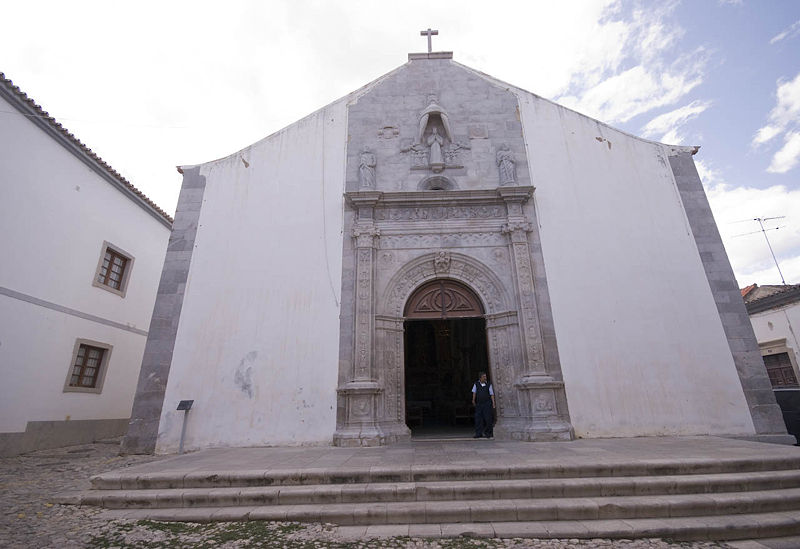
Church of Misericórdia – a Public Interest Monument, built between the years of 1541e 1551, this is an example of Renaissance expression of the Algarve, masterly stonemason Andre Pilarte, then resident in Tavira, who worked in the construction of the Jeronimos Monastery in Lisbon. Its Renaissance features pass through the composition and main entrance decor, in round arch, decorated with motifs inspired by Italian recorded, topped by a remarkable sculptural ensemble that integrates the image of Our Lady of Mercy, center, flanked by figures St. Peter and St. Paul and the arms of the kingdom and the city. Among other important aspects, there is 18 tile panels representing the activities of the Brotherhood of Mercy and some steps of Christ’s life. These are an interesting manifestation of Rococo form today missing some parts.
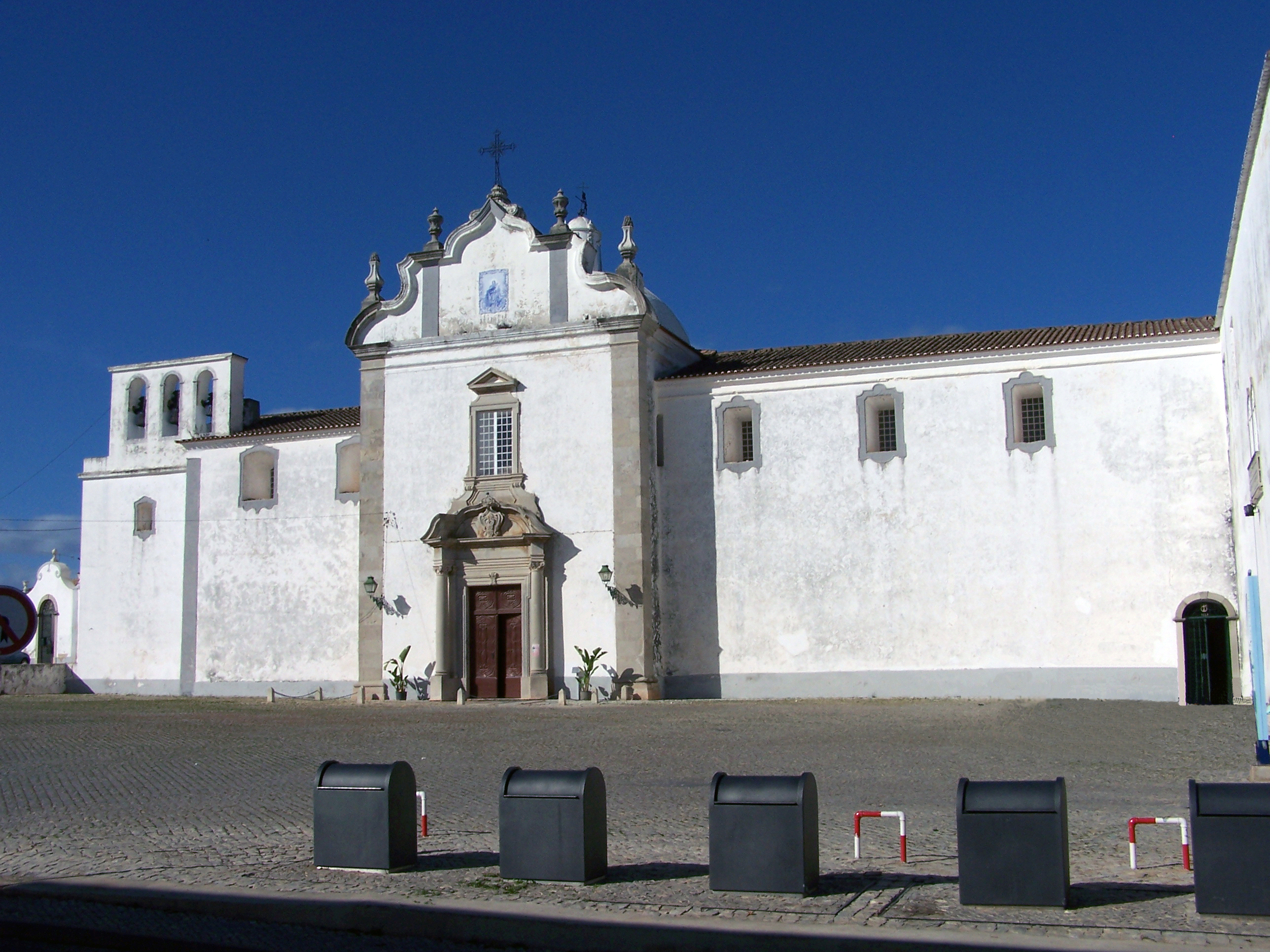
Church of the Third Order of Nossa Senhora do Carmo – This Public Interest Monument was founded in the early eighteenth century, the Third Order and resulted in the promotion of the Carmelite ideal: to achieve Christian perfection, promoting the good of the Church and the salvation of souls, with special devotion and prayer to the Virgin of Carmo. This temple is one of the most sumptuous of the Algarve, designed perpendicular to the convent church of the Discalced Carmelites friars. Among large pieces of art, are the main figures of Carmelite spirituality: N. Senhora do Carmo, St.º Elijah St.ª Teresa of Avila St.º Alberto, St.ª Efigénia.
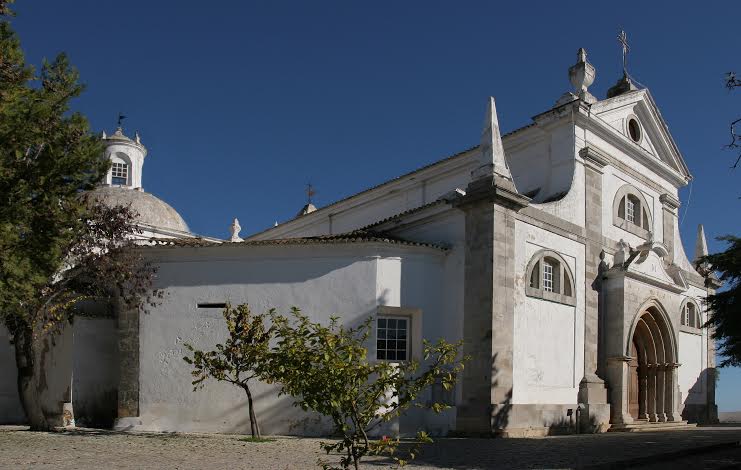
Mother Church of Santa Maria do Castelo –This national monument will have been built on an ancient mosque, between the thirteenth and fourteenth centuries, after the conquest of Tavira by the Order of Santiago in 1242, a genetic hill within the walls and on the ancient fortress, this differs by the result of adapting the structure of the old mosque. The long of years, depending on the artistic time, this temple has obtained several constructive and decorative campaigns, however, the final campaign happens in the early years of the 90s of the eighteenth century, in the neo-classicism, giving the temple the general aspect that still has . With the damage caused by the earthquake of 1755, the bishop entrepreneur D. Francisco Gomes of Avelar promotes the reconstruction of the temple, having recruited for that purpose the Italian architect Francisco Xavier Fabri. The main merit of this intervention have been to harmonize the new work with the preexistence of the ancient temple, in respect for their ancient and expressive memory.
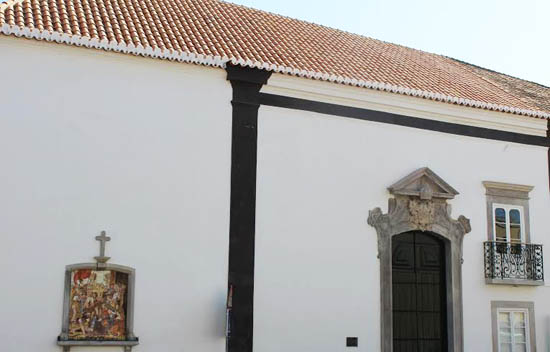
Church of São Pedro Gonçalves Telmo – a Public Interest Monument that was erected by a fishing party and sailors, that united effort to help others. The Quattrocento primitive temple, which is renewed by the wealth and modernity of aesthetic proposals of the Renaissance during the second quarter of the sixteenth century. Under the sign of this style and deliberate stimulus patronage of the noble family Menezes who promoted important campaigns in the building, which came update the architectural forms and second art collection classics and italianizantes criteria attributable to the probable intervention of the known master Andre Pilarte. However, with the 1755 earthquake, this temple suffered damage that forced its restoration and partial reconstruction by the hand of the celebrated master site Algarve Diogo Tavares and Ataide, in adjusted terms in the contract between it and the Confraternity of the Holy Body in 1756. In twentieth century, especially after the April 25, 1974, the Houses of Fishermen was extinguished that determined the passage of this church to the possession of the Pension Fund and allowance of Fisheries Professionals of Family and subsequently in 1992 to the Regional Centre of the Algarve Social Security.
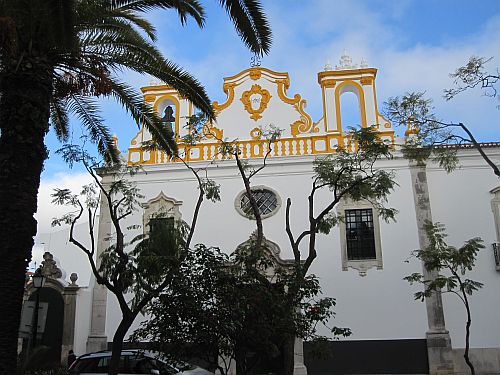
Church of the Hospital of the Holy Spirit – This Public Interest Monument originates from the XV century and belonged to the former Royal Hospital of the Holy Spirit, having been rebuilt from 1752, together with the hospital facilities, by decision of King John V and under the responsibility of the master Diogo farense Tavares de Ataide. With the earthquake of 1755, which caused damage to the church and hospital, its reconstruction was dragged to 1768. From the primitive medieval temple there remains only a side chapel.
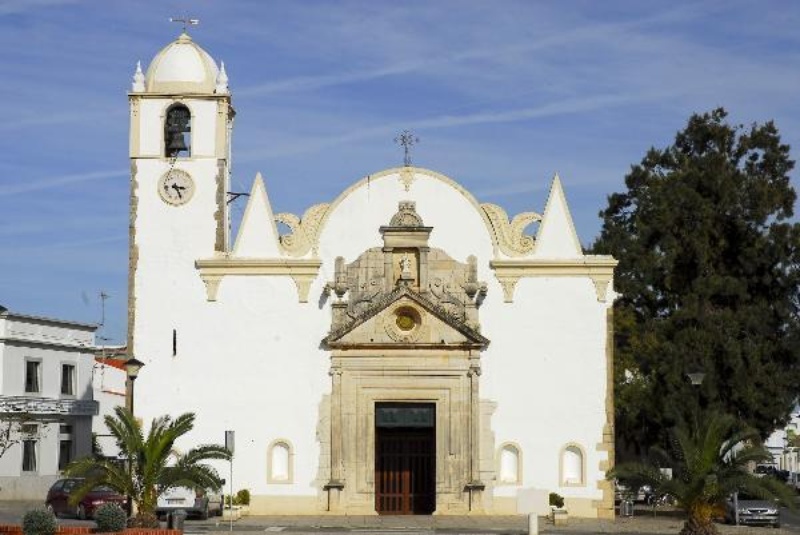
Mother Church of Nossa Senhora da Luz – a moment of Andrew Pilarte being classified, which is responsible for the existence of a Renaissance focus on the Eastern Algarve, located in Tavira, but with a very wide range of action, reaching the churches of Moncarapacho, Alcoutim and Ayamonte. The improvement of the shop will still be at the origin of the first Mannerist works of this eastern portion of the province, a fact that allows intuit a more prolonged action in time and more complex. The structure of the Luz de Tavira temple is a whole new in the sixteenth century architectural panorama of the Algarve, a church-hall only (hallenckirche) in the region, chronologically situated between the Manueline churches-hall and 50’s XVI century. The Rossio Church of Our Lady of Light is a public space modeled upon the construction of the church, in which well reflect the different eras of construction and village expansion. The central space is developed from the churchyard, it is occupied by a garden.



